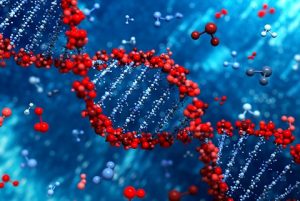Advances in sequencing, spectroscopy, and microscopy are driving life sciences organizations to produce vast amounts of data. Most organizations are dedicating significant resources to the storage and management of that data. However, until recently, their primary efforts have focused on how to host the data for high performance, rapid analysis, and moving it to more economical disks for longer-term storage.
The nature of life sciences work demands better data organization. The data produced by today’s next-generation lab equipment is rich in information, making it of interest to different research groups and individuals at varying points in time. Examples include:
- Raw experimental and analyzed data may be needed as new drug candidates move through research and development, clinical trials, FDA approval, and production
- A team interested in new indications for an existing chemical compound would want to leverage work already done by others in the organization on the compound in the past
- In the realm of personalized medicine, clinicians may need to evaluate not only a person’s health history, but correlate that information with genome sequences and phenotype data throughout the individual’s life.
The great challenge is how to make data more generally available and useful throughout an organization. Researchers need to know what data exists and have a way to access it. For this to happen, data must be properly categorized, searchable, and easy to find.
To get help in this area, many research organizations and government agencies worldwide are using the Integrated Rule-Oriented Data System (iRODS), which is open source data management software developed by the iRODS Consortium. iRODS enables data discovery using a data/metadata catalog that can retain machine and user-defined metadata describing every file, collection, and object in a data grid.
Additionally, iRODS automates data workflows with a rule engine that permits any action to be initiated by any trigger on any server or client in the grid. iRODS enables secure collaboration, so users only need to login to their home grid to access data hosted on a remote, federated grid.
Leveraging iRODS can be simplified and its benefits enhanced when used with Metalnx, an administrative and metadata management user interface (UI) for iRODS. Metalnx was developed by Dell through its efforts as a corporate member of the iRODS Consortium. The intuitive Metalnx UI helps both the IT administrators charged with managing metadata and the end-users / researchers who need to find and access relevant data based upon metadata descriptions.
Making use of metadata via an easy to use UI provided by Metalnx working with iRODS can help:
- Maximize storage assets
- Find what’s valuable, no matter where the data is located
- Automate movement and processing of data
- Securely share data with collaborators
Real world example: Putting the issues into perspective
A simple example illustrates why iRODS and Metalnx are needed. Plant & Food Research, a New Zealand-based science company providing research and development that adds value to fruit, vegetable, crop and food products, makes great use of next-generation sequencing and genotyping. The work generates a lot of mixed data types.
“In the past, we were good at storing data, but not good at categorizing the data or using metadata,” said Ben Warren, bioinformatician, at Plant & Food Research. “We tried to get ahead of this by looking at what other institutions were doing.”
iRODS seemed a good fit. It was the only decent open source solution available. However, there were some limitations. “We were okay with the rule engine, but not the interface,” said Warren.
A system administrator working with EMC on hardware for the organization’s compute cluster had heard of Metalnx and mentioned this to Warren. “We were impressed off the bat with its ease of use,” said Warren. “Not only would it be useful for bioinformaticians, coders, and statisticians, but also for the scientists.”
The reason: Metalnx makes it easier to categorize the organization’s data, to control the metadata used to categorize the data, and to use the metadata to find and access any data.
Benefits abound
At Plant & Food Research, metadata is an essential element of a scientist’s workflow. The metadata makes it easier to find data at any stage of a research project. When a project is conceived, scientists will start by determining all metadata required for the project using Metalnx and cataloging data using iRODS. With this approach, everything associated with a project including the samples used, sample descriptions, experimental design, NGS data, and other information are searchable.
One immediate benefit is that someone undertaking a new project can quickly determine if similar work has already been done. This is increasingly important in life science organizations as research become more multi-discipline in nature.
Furthermore, the more an organization knows about its data, the more valuable the data becomes. Researchers can connect with other work done across the organization. Being able to find the right raw data of a past effort means an experiment does not have to be redone. This saves time and resources.
Warren notes that there are other organizational benefits using iRODS and Metalnx. When it comes to collaborating with others, the data is simply easier to share. Scientists can put the data in any format and it is easier to publish the data.
Learn more
Metalnx is available as open source tool. It can be found at Dell Code www.codedellemc.com or on Github at www.github.com/Metalnx . EMC has also made binary versions available on bintray at www.bintray.com/metalnx and a Docker image posted on Docker Hub at https://hub.docker.com/r/metalnx/metalnx-web/
A broader discussion of the use of Metalnx and iRODS in the life sciences can be found in an on-demand video of a recent web seminar “Expanding the Face of Meta Data in Next Generation Sequencing.” The video can be viewed on the EMC Emerging Tech Solutions site.
